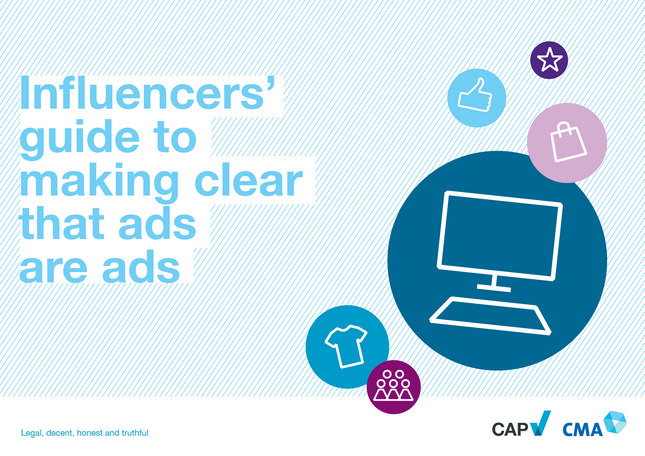
Taking into account feedback from key industry stakeholders, we have updated our guide to help influencers stick to the rules by making clear when their content is advertising. The ‘Influencer’s guide to making clear that ads are ads’, first published in 2018 and now on its third edition, was developed in collaboration with the Competition and Markets Authority (CMA).
The ‘Influencer’s guide’ is a best-practice guide intended to provide a good understanding of the rules and how to follow them for the benefit of the audience and the wider influencer marketing industry. It includes:
- What the rules are.
- When content should be disclosed.
- Advice around affiliate marketing.
- How to make clear ads are ads.
- Visual examples of best practice.
- What happens if content isn’t disclosed.
The ‘Influencer’s guide’ also includes a handy flowchart to help users quickly work out whether a post needs to make clear that it’s an ad.
Influencer marketing has evolved rapidly alongside the rise of social media and mobile technology into a popular advertising tool. Brands engage with people who are popular on social media platforms such as Instagram, Facebook, Twitter, TikTok, YouTube and others, to help promote their goods and services.
When a brand gives an influencer a payment or any other incentive, or an influencer is otherwise personally or commercially connected to the brand, any content featuring or referring to that brand will need to make clear that it’s advertising. This is a requirement under consumer protection law and the CMA has published advice on this here and here.
When a third-party brand also has ‘editorial control’ over the content, the ASA can also take action under the CAP Code. Where an influencer is promoting their own brand or products that they’ve collaborated in the creation of, such content also falls within the ASA’s remit - as does ‘affiliate marketing’, a type of performance-based marketing where an influencer receives a commission for clicks/sales generated by a personalised link or code.
Consumers must always be aware when they are being advertised to, and both brands and influencers have a responsibility to ensure the content makes that reality clear upfront. Failure to disclose a commercial relationship leaves both parties at risk of action from the ASA.
There are a variety of useful resources to help avoid breaking the rules, simply visit www.asa.org.uk/influencers.
More on
-
Keep up to date
Sign up to our rulings, newsletters and emargoed access for Press. Subscribe now.


